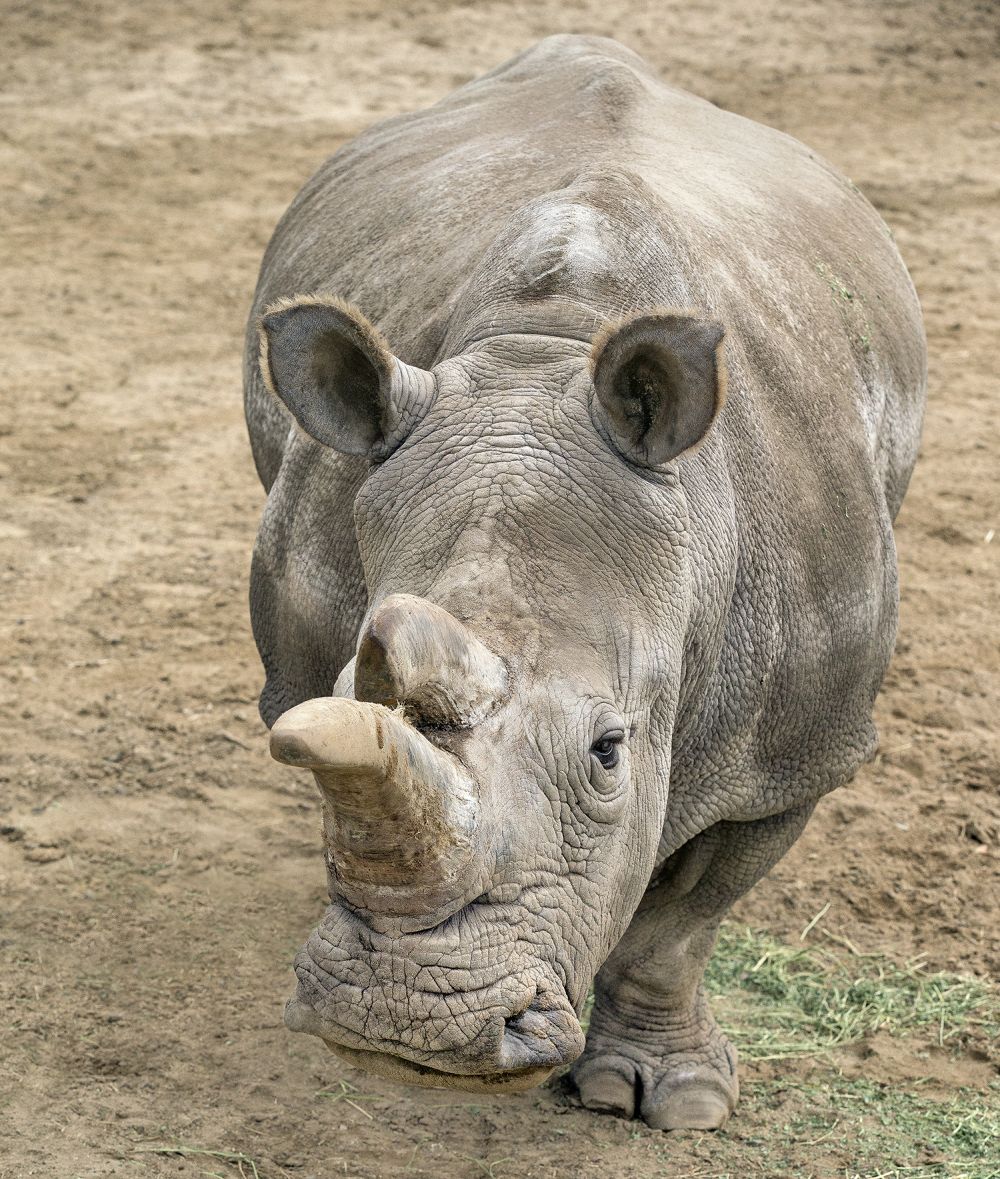The northern white rhino faces a biological puzzle: with just two infertile females left, how can the species survive? Scientists might just have the answer, as they say the cells of dead individuals could bolster the northern white rhino gene pool, giving rise not just to more animals, but to a genetically robust population.
While the northern white rhino (Ceratotherium simum cottoni) females are infertile, it’s hoped a surrogate such as the closely related southern white rhino (C. simum simum) could step in to carry their embryos. As for creating those? That all comes down to a bit of genetic tinkering.
“Banked skin cells (fibroblast cell lines) can be reprogrammed into induced pluripotent stem cells (iPSCs), which have the ability to differentiate into any cell type,” explained Dr Aryn P Wilder, one of a team of conservation scientists working on the project at San Diego Zoo Wildlife Alliance, to IFLScience. “From there, the iPSCs can be directed to differentiate into primordial germ cells that give rise to sperm and eggs.”
We’ve so far successfully created primordial germ cells in this way for species spanning mice, rats, rabbits, horses, monkeys, and even humans, with the process being slightly different each time. However, thus far, the only animal we’ve successfully created a fully mature and ready-to-go egg or sperm cell for is mice.
“One hurdle is that the primordial germ cells require support cells for growth and maturation,” continued Wilder. “For endangered species like the northern white rhino, we will need to generate these support cells from the iPSCs.”

By using two approaches to create northern white rhino embryos, it’s hoped we can secure genetic diversity for future generations.
Image credit: © San Diego Zoo Wildlife Alliance
The team still have some obstacles to overcome, including optimizing the culture conditions, and experimenting with the support cells Wilder mentioned. The process is possible thanks to the genetically rich remains of 12 deceased northern white rhinos stored in the Frozen Zoo, one of several cryoconservation repositories across the planet that aim to preserve species’ genetic diversity by banking biological material.
This isn’t even the first time frozen remains have contributed to the creation of northern white rhino embryos. Using cryopreserved semen, scientists have already created northern white rhino embryos for transfer into a southern white rhino surrogate. However, this method alone wouldn’t yield enough genetic diversity to keep future generations healthy. This is why it’s hoped that further embryos generated through dead skin cells could top up the population, painting a potentially positive future for the northern white rhino.
“Our models suggest that a population restored from more [northern white rhino] individuals, and with repeated reintroduction of those individuals over time, is less likely to suffer inbreeding depression and low fitness than a population restored from a limited founder pool,” said Wilder. “For these reasons, we think that focusing on using these viable cell lines for restoration is a promising strategy for restoring a healthy [northern white rhino] population.”
Recovering species from the brink is a topic that’s becoming increasingly relevant in modern times, as the northern white rhino is far from alone in teetering on the verge of extinction. Just recently, the de-extinction company Colossal Bioscience teamed up with Re:wild to work on technological advancements that could prevent endangered species from being wiped out, demonstrating how leaps forward such as this one are of vital importance to the planet’s most threatened wildlife.
Source Link: The Frozen Skin Of Dead Rhinos Could Save The Northern White Rhino From Extinction